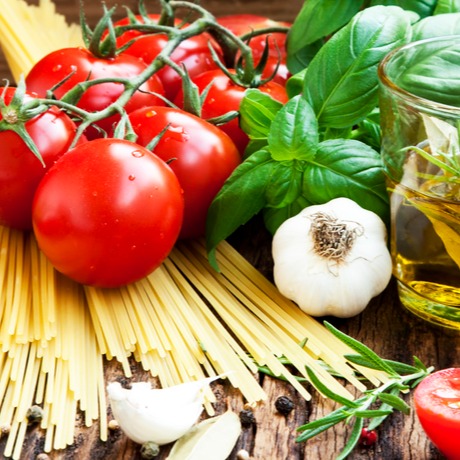
This comprehensive article explores the art of crafting nutritious, nourishing meals, and mouthwatering plates step by step. Our aim is to offer a guide that caters to individuals who enjoy serving others and seek an objective and impersonal approach. By eliminating personal pronouns, we ensure that our content focuses solely on assisting our audience in culinary endeavors.
Throughout this guide, we will emphasize the meticulous process of grocery shopping and meal planning, the careful selection of nutrient-rich ingredients, the art of food preparation and cooking, the secrets of plating and presentation techniques, and the final touches that elevate a dish from good to outstanding. By following these detailed instructions, readers will acquire the necessary skills and knowledge to effortlessly assemble truly satisfying meals using healthy recipes that promote both health and enjoyment through healthy eating.
So, whether you are an aspiring home cook looking to find recipes to expand your culinary repertoire or a seasoned chef seeking new inspiration, this food blog article will serve as your trusted companion on the journey to creating delectable plates and snacks that are as nourishing as they are delightful.
Key Takeaways
Determine nutritional requirements based on age, gender, activity level, and medical conditions.
Opt for whole grains, lean sources of protein, and a colorful array of fruits and vegetables for nutrient-rich ingredients.
Wash and prepare ingredients properly to retain nutrients and enhance flavor.
Consider color contrasts, textures, and garnishes to create an aesthetically pleasing and enjoyable dining experience.

Meal planning style
The first step in meal planning involves determining the specific nutritional requirements and dietary restrictions of the individuals for the meal. This crucial initial phase make a meal plan ensures that the meal meets basic nutritional needs and aligns with any specific dietary preferences or restrictions, creating a thoughtful and considerate dining experience for those served.
To begin, gathering information about each individual's nutritional requirements is important for healthy choices. This includes assessing their age, gender, activity level, and any medical conditions they may have. Understanding these factors allows one to determine appropriate portion sizes and nutrient composition to support optimal health.
In addition to successful meal planning, it is imperative to identify any dietary restrictions or preferences individuals may have. Some individuals may follow vegetarian or vegan diets, while others may have allergies or intolerances to certain foods, such as gluten or dairy products. Taking note of these considerations will allow for selecting ingredients and recipes that accommodate everyone's needs.
Once the specific nutritional requirements, food budget, and dietary restrictions are determined, the next step will focus on choosing nutrient-rich ingredients and favorite recipes that make enough meals fulfill these criteria without compromising taste or variety.

Choosing Nutrient-Rich Ingredients for Healthy Meals
Selecting ingredients that are rich in nutrients is an important aspect of creating and eating a balanced and healthy meal. When considering the nutritional value and shopping list of ingredients, it is crucial to focus on those that provide essential macronutrients (carbohydrates, proteins, and fats) as well as micronutrients (vitamins and minerals). By incorporating a variety of nutrient-dense foods into your next meal plan, you can ensure that you are providing your diners with the necessary components for optimal health.
When choosing ingredients, opt for whole grains such as quinoa or brown rice instead of refined grains like white rice or pasta. Whole grains retain their bran and germ layers, which contain fiber, vitamins, and minerals. Additionally, lean sources of protein such as chicken breast or tofu should be prioritized over processed meats or fatty cuts. These healthy options offer high-quality protein without excessive amounts of unhealthy fats.
Incorporating a colorful array of healthy fruits and vegetables into your meal will not only enhance both the visual appeal of your meal and its nutritional value but also provides a wide range of vitamins and minerals. Dark leafy greens like spinach or kale are excellent sources of iron and calcium while vibrant fruits like berries offer antioxidants and vitamin C.
Mastering Meal Planning: From Preparation to Cooking
When preparing and cooking food, it is important to follow proper techniques and methods to reduce food waste and ensure optimal taste and nutritional value. Proper preparation involves washing fruits and vegetables thoroughly to remove any dirt or bacteria they may contain. It is also essential to trim excess fat from meats and poultry, as well as remove any bones or skin that may affect the final dish. Cooking methods such as steaming, grilling, baking, and sautéing can help retain the nutrients in the food while enhancing its flavor.
Steaming is a popular method that uses hot steam to cook food quickly and efficiently without adding extra fats or oils. Grilling adds a smoky flavor to meats and vegetables, while baking allows for even heat distribution throughout the dish. Sautéing involves cooking small pieces of food in a skillet with minimal oil over high heat, resulting in a flavorful dish with crispy edges.
Plating and Presentation
Plating and presentation play a significant role in enhancing the visual appeal of a dish. When it comes to your own meal plans serving dinner to family members or others, it is essential to consider how the food looks on the plate. A well-plated meal not only stimulates the appetite but also showcases the care and attention put into its creation.
To create an aesthetically pleasing meal prep or plate, start by considering color contrasts and balance. Combining vibrant fruits or vegetables with neutral-colored grains or proteins can make a dish visually appealing. Additionally, arranging different elements of food delivery the meal strategically can create an appealing balance on the plate.
Furthermore, texture is another aspect that should be considered when plating a dish. Incorporating various textures such as crispy, creamy, or crunchy can add depth to the overall dining experience.
In terms of presentation, using appropriate serving utensils and garnishes can further elevate the food waste visual appeal. Careful placement of sauces or drizzles using squeeze bottles or spoons adds finesse to any dish.
Adding the Finishing Touches
The final touches on a dish, such as the careful placement of garnishes and the use of appropriate serving utensils, contribute to its overall aesthetic appeal. These finishing touches not only enhance the visual presentation but also demonstrate a commitment to providing an enjoyable dining experience. Garnishes serve as decorative elements that add color, texture, and flavor to a plate. They can range from simple herbs or edible flowers to elaborate designs made from vegetables or sauces. The choice of garnish should complement the main ingredients and harmonize with the overall theme of the meal.
In addition to garnishes, selecting suitable serving utensils is crucial in showcasing professionalism and attention to detail. The type and size of utensils should align with food preferences and the nature of the dish being served. For example, a delicate dessert may require small spoons or forks for precise portioning, while a hearty steak might be best accompanied by larger cutlery for ease of handling.
Frequently Asked Questions
How Can I Make Sure My Meal Is Visually Appealing?
Ensuring visual appeal in a meal involves considering various factors. Attention should be given to color, arrangement, and presentation techniques for healthy meals. Incorporating a variety of fresh produce colorful ingredients and using artistic plating techniques can enhance the visual appeal of a meal.
What Are Some Common Mistakes to Avoid When Meal Planning?
Common mistakes to avoid when meal planning include a lack of variety in meal plans, neglecting portion sizes, not considering nutritional balance when planning meals, ignoring food allergies or dietary restrictions to plan meals, and failing to plan for leftovers.
Are There Any Specific Cooking Techniques That Can Enhance the Flavor of Nutrient-Rich Ingredients?
Cooking techniques such as roasting, sautéing, and grilling can enhance the flavor of nutrient-rich ingredients. These methods involve applying heat to the food, resulting in caramelization, Maillard reactions, and intensified flavors that contribute to a more enjoyable dining experience.
What Are Some Creative Ways to Incorporate Different Textures in My Plated Meal?
Incorporating different textures in a plated meal can enhance the sensory experience and add complexity to the dish. This can be achieved through techniques such as combining crispy and creamy elements or incorporating crunchy toppings.
How Can I Prevent Food From Getting Cold While Plating and Adding Finishing Touches?
One way to save time to prevent food from getting cold while plating and adding finishing touches is by preheating plates before serving. This can be done by placing them in a warm oven or using a plate warmer.
Rely on PlanetDrugsDirect.com to Buy Online Prescription Drugs
As a trusted prescription referral service, we offer important benefits whenever you order online. Each of our partner pharmacies and/or government-approved dispensaries is committed to providing the best experience possible of any online prescription referral service on the internet. We offer:
Low prices
Quick turn-around times
Generic and brand-name medications
Unparalleled customer service
 Medically reviewed by
Medically reviewed by 





